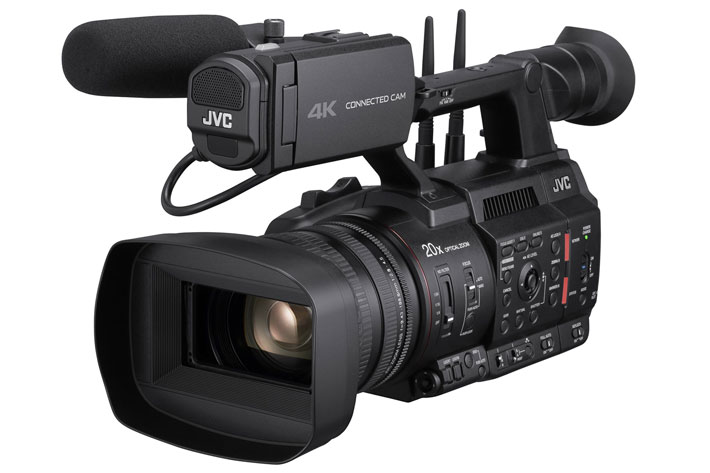
With support for SRT added to its CONNECTED CAM series of broadcast cameras, JVC gives customers another streaming option, with a resilient, secure IP transfer protocol.
Developed by Haivision, SRT (Secure Reliable Transport) is an open source video transport protocol and technology stack. It is optimized for video streaming across unpredictable networks like the internet. The protocol, which grew out of the desire to sidestep the high costs of satellite and private network contribution, relies on end-to-end 128/256-bit encryption to keep content secure.
Now, JVC Professional Video, a division of JVCKENWOOD USA Corporation, has added support for the SRT open streaming IP protocol to its CONNECTED CAM series of broadcast cameras. Incorporated into the GY-HC900, GY-HC500 and GY-HC550 professional cameras, this latest update further enhances the cameras’ already superior level of IP connectivity. SRT support for JVC CONNECTED CAM cameras is available as a firmware upgrade from the JVC Professional Video website.
“Since introducing CONNECTED CAM, we adopted the best-in-class QoS technologies to enable efficient IP-based workflows that are robust and secure,” says Edgar Shane, General Manager, Engineering, JVCKENWOOD USA Corp. “The addition of the SRT streaming protocol offers CONNECTED CAM customers another choice for video over IP transport in addition to our existing Zixi protocol support that’s been in place.”
Able to connect wirelessly
“By introducing support for the SRT protocol, JVC CONNECTED CAM can leverage any network to deliver a best-in-class video streaming experience – a powerful tool for content creation,” says Jesús (Suso) Carrillo, Director SRT Alliance at Haivision. “SRT connects edge devices to the cloud in a reliable and secure way, whether it be for live news gathering or transferring files to the studio. With this implementation, JVC CONNECTED CAM ensures reliable cloud-based workflows, whatever the network conditions.”
The JVC CONNECTED CAM Series of products leverages IP packet delivery technologies to enable bidirectional connectivity for transport of video, audio and control signals throughout the production workflow. It also allows for IFB and return video to CONNECTED CAM cameras in the field. The series transforms the reach and scope of professional video production. They are equally well-suited to applications as simple as streaming to a social media site or as sophisticated as acquiring and transporting ENG and EFP content to a control room, either live or via FTP.
Advanced streaming capabilities of JVC’s CONNECTED CAM series enable a powerful video workflow that’s faster, lighter weight and more flexible than traditional setups that rely on ENG microwave trucks and even IP backpack alternatives. Depending upon the CONNECTED CAM model, cameras can connect wirelessly via built-in MIMO antennas to a wireless LAN, snap-on bonded LTE access point or integrated Ethernet port.
JVC cameras support Zixi
Bidirectional IP packet transport moves live video and audio between the camera and studio, among multiple CONNECTED CAM units and even as streaming media to social media sites like Facebook. CONNECTED CAM series cameras also can transport files via FTP transfer. Two channels of IFB communication via IP connection allow a studio producer to talk to the camera operator and talent in the field, while return video from the studio transported via the same connection makes it simple to ensure shots are framed accurately.
In addition to the SRT protocol, JVC CONNECTED CAM cameras also support Zixi, effectively addressing the challenges (latency, jitter and packet loss) of transporting content via LTE, Wi-Fi and LAN networks. Both protocols ensure the cameras are outfitted with the reliable IP packet transport necessary to meet expectations for broadcast-quality video in a professional production environment. Both have also gained broad support from the vendor community, says the company.
